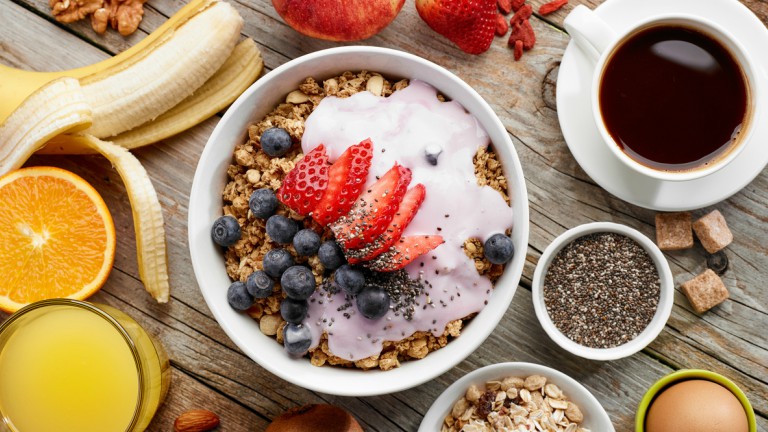Healthy foods aren’t always what they claim to be. Healthista nutritionist May Simpkin spots 12 examples of healthy food imposters to help you spot what’s good for you
Whether you’re watching your weight or just being health conscious, chances are you keep your ear to the ground when you hear about new ‘health’ foods or ‘diet’ foods. While many of these foods are great additions to your diet, there are a few imposters offer little nutrition value and could even be bad for you thanks to the potentially harmful chemicals they might contain.

In the first instance, reading the labels on foods is crucial. Behind the “healthy” label, the actual ingredients listed may tell an entirely different story, even though they still adhere to the advertising guidelines.
behind the “healthy” label, the actual ingredients listed may tell an entirely different story
1. Wholegrain breads
Wholegrain or wholewheat bread is perceived as a healthier option but the amount of unrefined wholegrains in the loaf is important. In many cases, a loaf of wholegrain bread does contain some wholegrains but can also contain as much as 70 per cent refined flour. Even those labelled as “100% natural”, may contain only a few actual wholegrains. In addition, to keep costs low and improve taste, appearance and shelf life, manufactures may add preservatives, artificial sweeteners, hydrogenated oils, high fructose corn syrup or even food colouring.
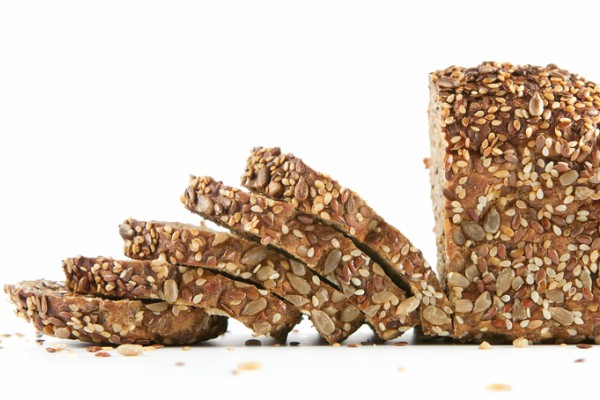
Check the labels carefully to ensure that the first ingredient is either “wholewheat” or “wholegrains”, and choose breads made up of significantly higher proportions of wholegrains, ideally “100% wholewheat”.
TRY THIS: Biona Organic Rice and Buckwheat Bread perfect for gluten-free diets too.
2. Breakfast cereals
We all know those chocolate based children’s cereals are bad for us, but did you know the so-called healthier wholegrain cereals aren’t that great either? Firstly, they are highly processed and therefore many of the natural nutrients that were contained in the original ingredients are likely to have been destroyed as part of the manufacturing process. To compensate for this loss, you will find these foods fortified with vitamins and minerals, but these are synthetic and in a less bio-available form than their original natural versions.
cereals are highly processed and the natural nutrients are likely to have been destroyed as part of the manufacturing process
Secondly, these cereals are carbohydrates, so they are converted into sugar, which in turn raises insulin levels, stores fat and sets you up for a mid-morning sugar craving. To make them tastier and more appealing, they will also contain a lot of sugar, with manufacturers using seemingly healthier sugar alternatives such as honey or dried fruits. They are still sugars and your body converts that into fat in the same way.
Instead of cereals, start your day with protein – try scrambled eggs or natural yogurt, porridge made with milk with flaked almonds & cinnamon or a homemade protein shake.
TRY THIS: Healthista’s new vegan and whey protein powders specifically formulated for weight loss and weight management.
3. Gluten-free foods
Whilst it is important to avoid gluten if you have been diagnosed with a gluten allergy, such as Coeliac disease, choosing gluten-free food does not necessarily mean it is healthy. It is likely to be highly processed to remove the gluten and not as healthy as the whole food alternatives you could be eating. Instead, choose foods that are naturally gluten-free such as fresh vegetables, fruits, quinoa and dairy products.
TRY THIS: King Soba Organic Buckwheat Noodles for a naturally gluten-free food that’s convenient and delicious
4. Low-fat salty snacks
Baked crisps, vegetable crisps or flavoured low-fat popcorn have become wildly popular recently, unsurprisingly as it allows you to eat your favourite salty snacks without feeling guilty. The problem with these is that thanks to this halo effect, many of us think it’s OK to devour an entire bag without batting an eyelid. Unfortunately not only does this introduce too much salt into your diet, it also raises your blood sugar as the snacks still have a high glycaemic load, due to their carbohydrate content meaning they could spike your blood sugar as much as sugar snacks would.
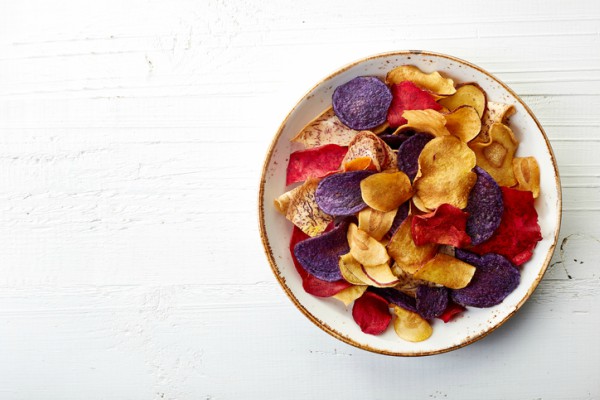
In order to make the manufacture of these foods as cost effective as possible, manufacturers are using synthetic oils that are cheaper to produce and that also increase the shelf life of a product. Cheaper vegetable oils are processed using high heats and chemical additions and are not easily recognised by the body. They are harder to digest and break down and therefore cannot be safely processed as part of the digestive process. This leads to inflammation, thereby increasing the risk of cardiovascular disease, obesity and diabetes.
low-fat snacks introduce too much salt into your diet also raising your blood sugar
Instead, make your own popcorn with whole kernels in a saucepan or eat a (small) handful of nutrient rich raw almonds or mixed nuts.
TRY THIS: Rude Health Oat and Spelt Crackers for a healthier way to keep you going.
5. Sweeteners
Sweeteners such as agave nectar (a syrup from the agave plant) have been hailed as a healthy way to sweeten your meals, but with 97 per cent fructose, agave can wreak havoc on your liver. Agave is metabolised by the liver like alcohol, which can create a fatty liver, while fructose can raise cholesterol and inflammation levels.
many energy or protein bars that are little more than sweets in disguise
Beware of many energy or protein bars that are little more than sweets in disguise; loaded with sugar or high-fructose corn syrup or artificial sweeteners, the benefits of other healthy ingredients are far out-weighed.
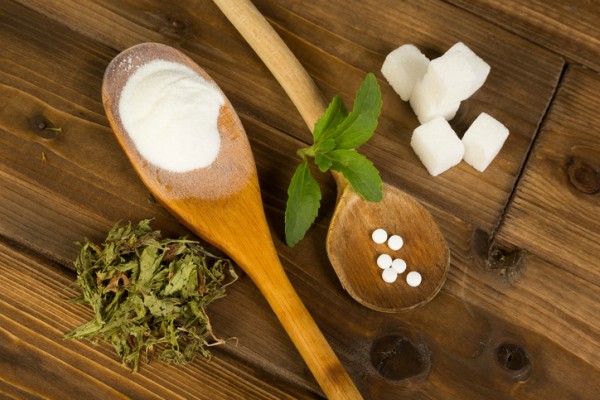
It’s better to choose naturally sweetened items that have some nutritional benefit, like fruit or even a little bit of honey, which is richer in antioxidants than sugar is. You could try the plant sweetener stevia or better still – skip the sweetener altogether!
TRY THIS: Inspiral Granulated Stevia made from 100% natural and vegetable based ingredients.
6. Fruit juices
Whilst fruit juices do contain vitamins and minerals, they lack the fibre of the original fruit, whilst retaining only the water and sugar. A glass of juice can therefore contain a very high proportion of sugar, sometimes the equivalent of a can of fizzy soda. Some juices can also contain added sugars and preservatives.
a glass of juice can contain a very high proportion of sugar
Avoid these altogether and eat the whole fruit instead or drink water.
7. Dried fruits
Dried fruit will contain vitamins and minerals as well as fibre, but will lack the water element of the original fruit. The remaining fruit will therefore contain a very high amount of sugar. In addition, it may also have added sugar and chemical preservatives such as sulphites to improve shelf life. Be aware of the amount of dried fruit content in a shop-bought muesli, granola or “trail mix” dried fruit packs, even if they are labelled “no added sugar”. Whilst they may contain healthy ingredients such as oats and nuts, the sugar content can still be significant due to the dried fruit alone.
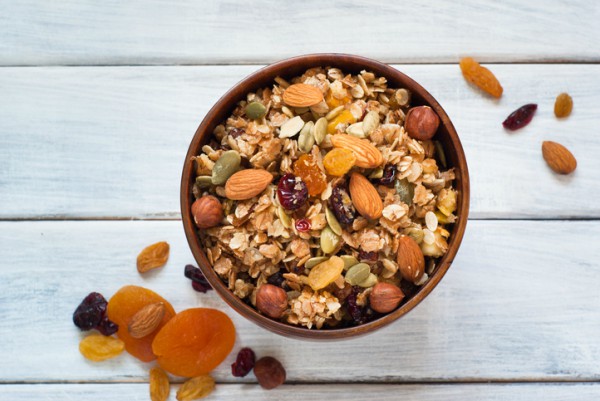
Instead, eat the whole fruit, which is much more filling and has fewer calories for the same proportions. If you’re looking for a high-energy snack, choose natural mixes of unsalted nuts and unsweetened dried fruit and consider your portions (a small handful is plenty).
8. Sports or energy drinks
As the ultimate thirst quenchers or energy boosters, manufacturers are quick to offer this as alternatives to water to boost performance.
There is a significant lack of evidence to suggest any enhanced performance or recovery due to such drinks. As well as added caffeine, a quick glance at the nutrition label will also reveal a very high sugar content along with the hydrating electrolytes, which also means a significantly high calorie count.
Beetroot juice has been shown to improve exercise performance due to its high nitrate content, which dilates blood vessels. Otherwise to ensure normal hydration, water or herbal teas are ideal.
TRY THIS: Beet It Organic Beetroot Juice for a healthy and nutritious drink.
9. Smoothies
Although a quick and convenient way of consuming fruits and vegetables, it is important not to be fooled that any smoothie is automatically healthy. As with juices, some shop-bought smoothies can contain a lot of sugar if they are made up with mostly fruits or have added fruit syrups, cordials or even an ice-cream base.
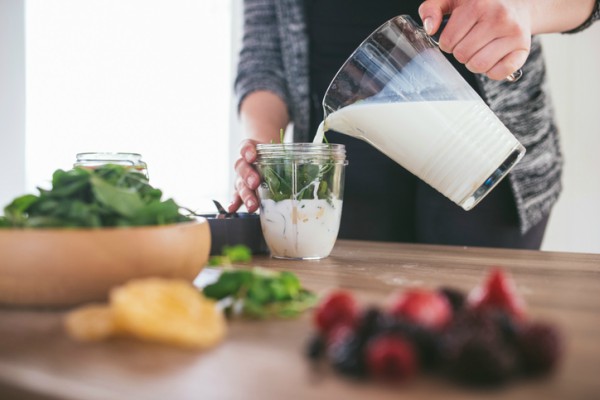
Instead, make your own, using the whole fruit or vegetable to ensure a ratio of approximately 1 fruit to 3 vegetables or check the labels carefully to ensure these proportions as far as possible. Add some high quality protein powder in whey (from milk) or vegan varieties to make them into a meal.
10. ‘Skinny’ coffee drinks
For many of us, choosing the option with fewer calories and less fat is a no-brainer, but is this choice a healthy one? The truth is, to compensate for the lower fat content, many of these drinks contain more sugar than your usual coffee. ‘Skinny’ coffee drinks you can buy at supermarkets are often even more packed with sugar, artificial sweeteners and other additives that will confuse your metabolism.
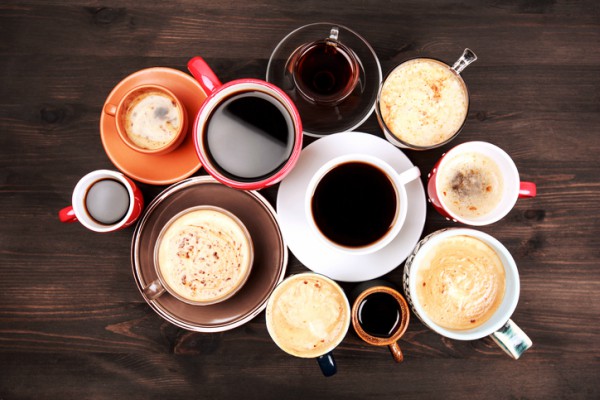
While skimmed or semi-skimmed milk contains few calories, whole milk contains saturated and monounsaturated fats, which will keep you fuller for longer, support your metabolism and avoid the hunger pangs later. It is worth noting that the additional fat in whole milk also provides valuable fat-soluble vitamins A, D, E and K.
Instead, skip the designer lattes and opt for a classic black coffee or green tea.
TRY THIS: Pukka Ginseng and Matcha Green Tea for an uplifting and refreshing start to the day.
11. Low fat muffins
Sitting healthy alongside the full fat version, the low fat options for muffins can be very appealing when ordering a drink at a coffee shop. However, the reduced fat versions are in fact not healthy at all and will contain much more sugar than the full fat versions. When fat is taken out during the manufacturing process, it is usually replaced with sugar to make up for the lack of taste. Although it may contain a few less calories, it will be less satiating and filling due to the lower fat content.
When fat is taken out during the manufacturing process, it is usually replaced with sugar to make up for the lack of taste
Ideally avoid altogether and opt for healthier snacks such fresh fruit or nuts. Otherwise, share a full fat muffin with a friend or save the other half for another treat.
12. Low-fat peanut butter
As with the muffins above, if you take out the fat from the original nut butter, it will be replaced with sugar (and possibly other fillers) to improve the taste. Whilst it may contain less fat, it will still contain similar calories as a result of the amount of sugar added, but you will not benefit from the good fats that the nuts offer. Remember, the notion that ‘fat makes you fat’ is outdated and it is in fact the sugar which will contribute to weight gain and obesity.
Opt for a good quality nut butter where the ingredients list is made up of just one ingredient: the nut itself.
TRY THIS: Meridian Brazil Nut Butter containing brazil nuts and nothing else.
MORE USEFUL POSTS BY MAY SIMPKIN
May Simpkin is a UK registered practitioner with a Masters Science degree in Personalised Nutrition. She is an experienced clinician, practicing functional medicine from an evidence base, providing the latest research into nutrition. She is bound by the code of ethics in clinical practice and has met the strict criteria required for BANT, the British Association for Applied Nutrition and Nutritional Therapy and the CNHC, Complementary and Natural Healthcare Council, which is the council recommended by the UK Department of Health for complementary and natural healthcare services. She is also Chair of the Continual Professional Committee at BANT. In addition, she is registered with IFM, The Institute for Functional Medicine and a member of the RSM, The Royal Society of Medicine.
For more information on how to lose weight, nutrient-rich recipes, and ideas visit www.maysimpkin.com or Follow May on Instagram: @maysimpkinnutrition or Twitter @MaySimpkin or Facebook
READ MORE:
What to eat for a healthy smile
6 diet tips to boost your energy at work
How To Cook Healthy For Beginners: 6 easy smoothies and juices
The healthy holiday where fitness meets coastal luxury
Like this article? Sign up to our newsletter to get more articles like this delivered straight to your inbox.



